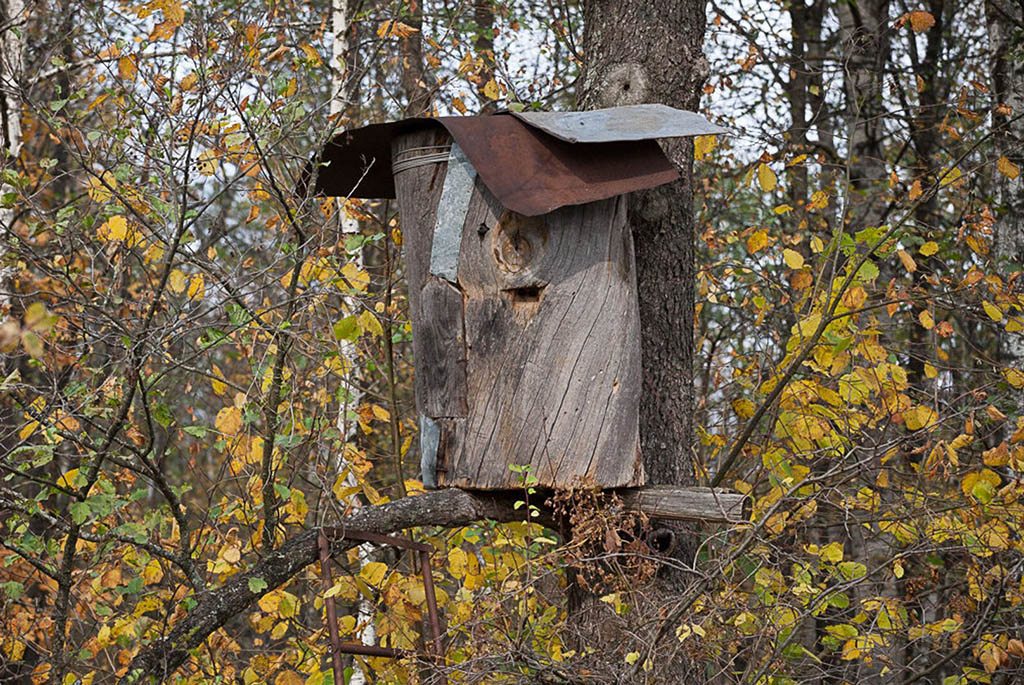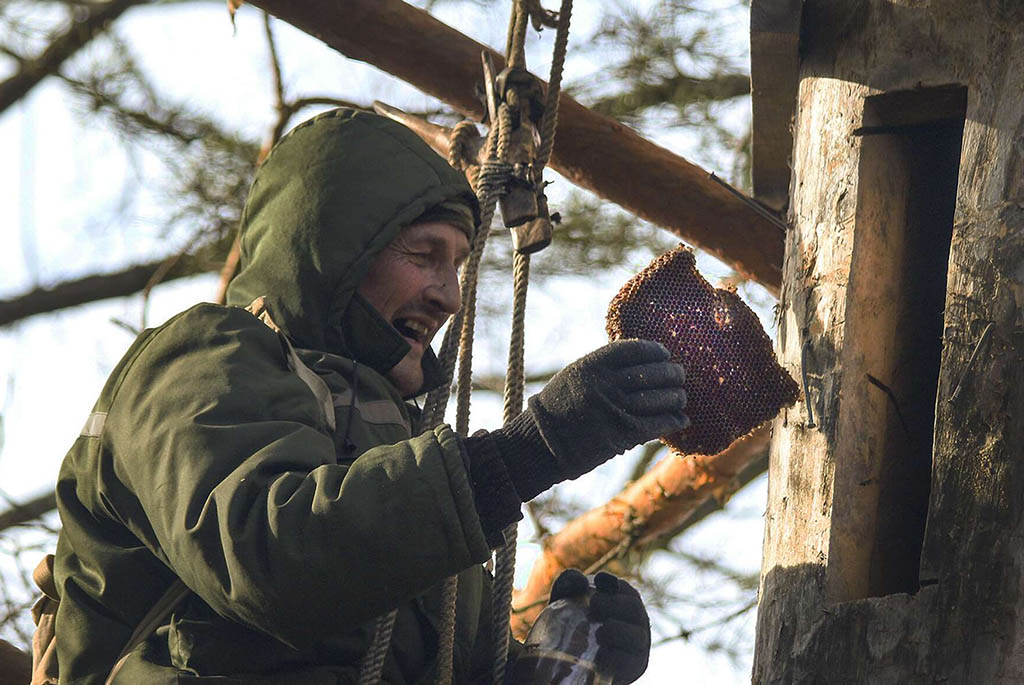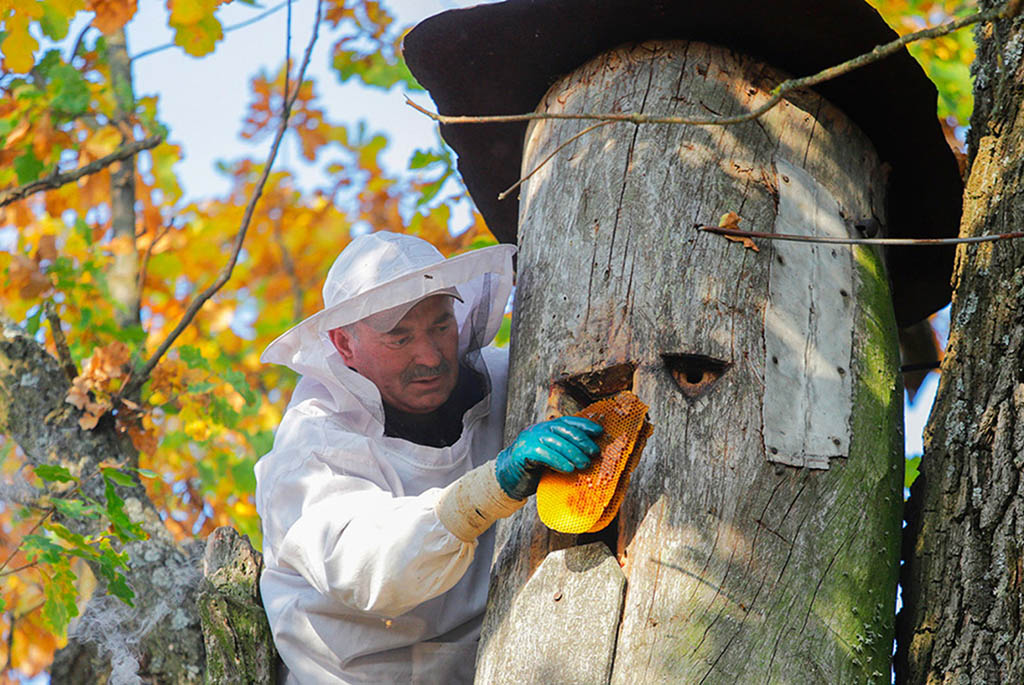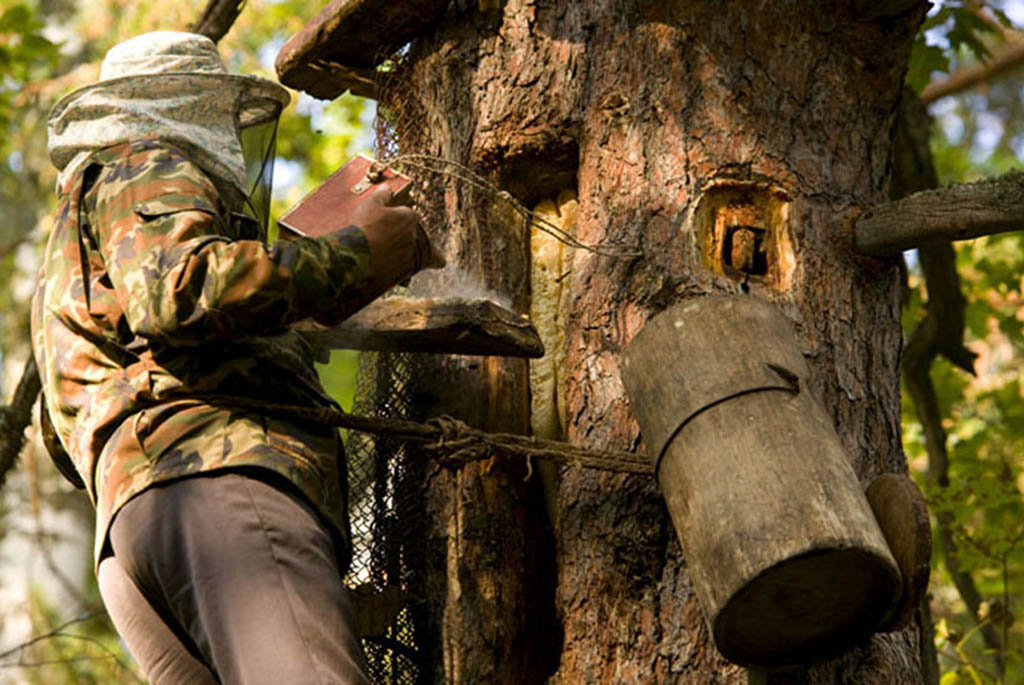The name of the craft derives from the word "bort" – a hollow tree trunk. Bees were bred in special hollows, which were carved out in wooden logs. These logs, called "bort", were treated with herbs and honey liquid to attract new specimens and were hung on trees at a certain height. For beekeeping, trunks of linden, alder, oak, pine, alder, and aspen were most often used.
The tradition of Belarusian bort-based beekeeping counts more than 1000 years. Its peculiarity is that the life of bees remains as close to natural conditions as possible. In the process of bee breeding, the beekeeper does not use industrial and chemical additives to regulate the population. Bees independently maintain the necessary temperature inside the wooden log and create an atmosphere that kills parasites and prevents the spread of diseases.
The uniqueness of Belarusian bort beekeeping is that the craft has been passed down from generation to generation, and its technologies have remained unchanged to this day.
In the XVII-XVIII centuries, products of Belarusian beekeeping were exported throughout Europe. They were used to make candles, medicines, and mead.
By the end of the XVIII century, bort beekeeping gradually gave way to the spread of log and frame beekeeping. The active deforestation also contributed to the reduction of bort beekeeping.
In the XIX century, with the introduction of dismountable beehives in Belarus, bort beekeeping took a back seat but did not completely disappear. Many families, especially in the Polesie region, continue to practice traditional breeding of wild bees, passing down knowledge, skills, and tools through inheritance. For Belarusian peasants, bort beekeeping was a good support during the difficult times at the beginning of the XX century.
Two world wars did irreparable damage to bort beekeeping. Forests were intensively cut down, apiaries were devastated, families preserving the traditions of bort beekeeping perished during military actions.
After World War II, most beekeepers switched to the frame system of bee breeding. Forest beekeeping continued to be preserved mainly in the Gomel and Brest regions.
Currently, in the Polesie region, there are families who successfully continue the work of their ancestors. Among such craftsmen is the family of Petr Gvozd from Rechitsa. Petr's great-grandfather set up the first log hives in the forests of the Rechitsa district almost 200 years ago. One of such forests now has more than a hundred "bort" (log hives). The age of some logs amounts to 150-200 years. In Pinsky, traditional beekeeping is carried out by the hereditary beekeeper Nikolai Kachanovsky. Forest beekeeping is also widespread in the Lelchitsy district.
In total, about 150 families in Belarus are engaged in bort beekeeping. Despite the fact that breeding wild forest bees is complex and meticulous work, modern bort beekeepers continue to diligently repair old logs, craft new ones, manually hang them on trees, and do their utmost to safeguard the craft traditions of their ancestors.
In 2020, Belarusian bort beekeeping was included in the UNESCO Intangible Cultural Heritage List. This speaks to the importance of preserving and transmitting the traditions of log hive beekeeping. Bort beekeeping is not only a distinctive craft, which is a part of Belarusian culture, but also an important ecological activity aimed at saving and protecting the global population of honey bees.





